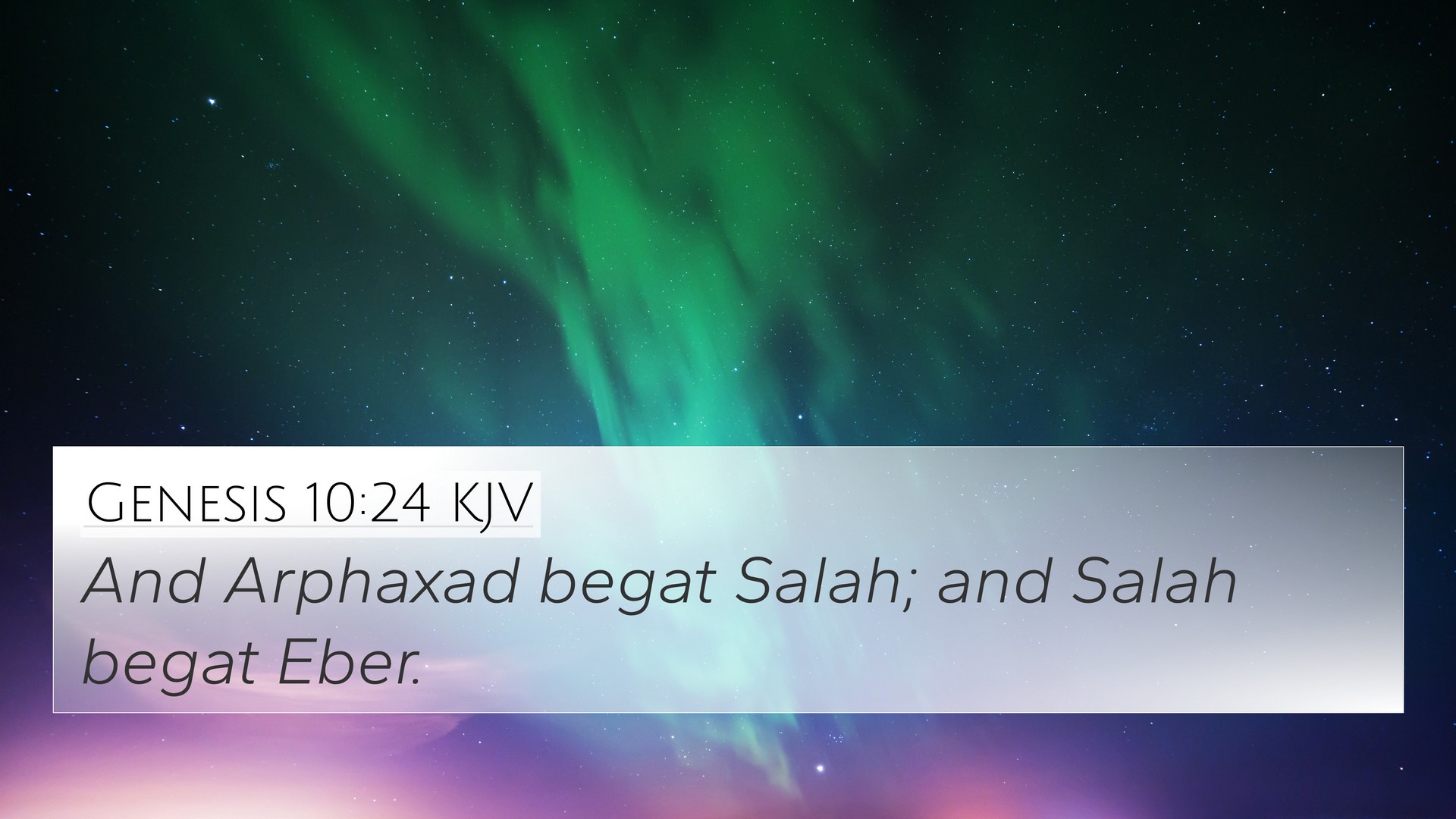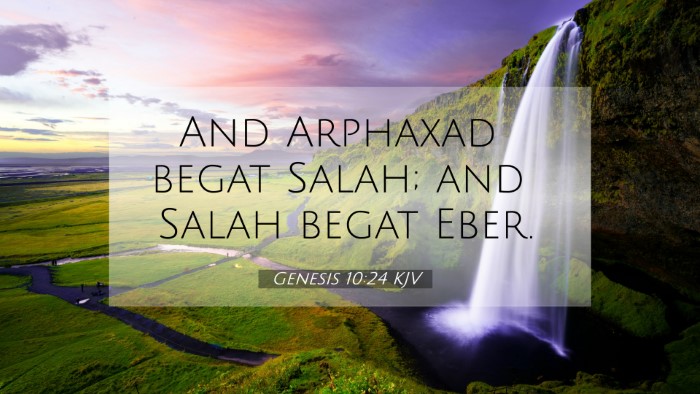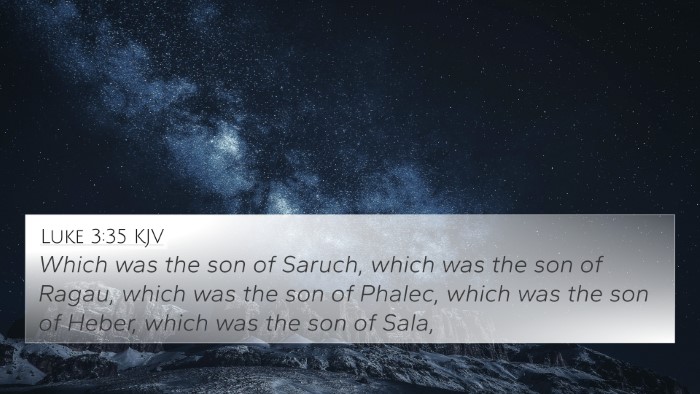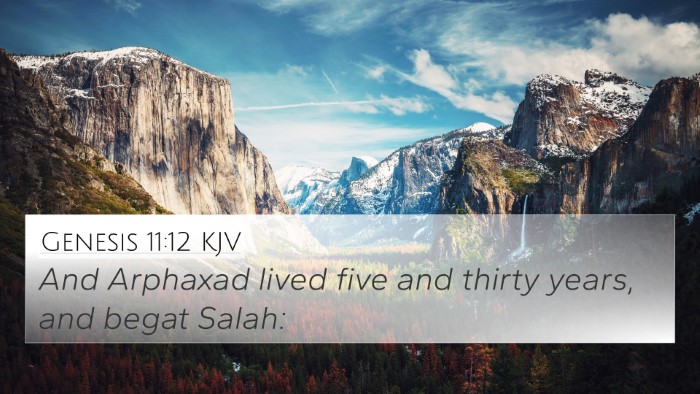Understanding Genesis 10:24
Genesis 10:24 states:
"And Arphaxad begat Salah; and Salah begat Eber."
This verse is significant in the context of the genealogies outlined in the Book of Genesis. It follows the genealogical account of Noah’s descendants, highlighting the lineage that leads to significant figures in biblical history.
Meaning and Context
This verse contributes to our understanding of the ancestry of various nations and the unfolding plan of God as outlined in scripture. Here’s a summary of insights from various public domain commentaries:
-
Matthew Henry's Commentary:
Henry emphasizes the importance of genealogies as records of God's covenant with humanity. He remarks that names listed in this genealogical account show the fulfillment of God’s promise to Noah and signify the expansion of humanity across the earth in the post-flood world. Arphaxad, Salah, and Eber are pivotal in leading to Abram (Abraham), the father of many nations, which signifies God’s continuing purpose.
-
Albert Barnes' Commentary:
Barnes points out the significance of Eber, from whom the term 'Hebrew' is derived. This highlights the connection between Eber’s lineage and the Hebrew people, marking important cultural and theological implications throughout the narrative of scripture.
-
Adam Clarke's Commentary:
Clarke notes that this lineage ultimately contributes to the setting of God’s redemptive plan. He discusses the transition from Genesis to the narrative of Israel’s formation and the role that Eber and his descendants play in biblical history. Clarke provides insights into the importance of familial lines in understanding the heritage of God’s chosen people.
Bible Verse Cross-References
Genesis 10:24 connects to several other biblical passages, enriching our understanding of the genealogy and the interconnectedness of scripture. Notable references include:
- Genesis 11:10-26: The genealogy continues with Shem's descendants, providing further context on the line leading to Abraham.
- Hebrews 7:14: Acknowledges the significance of the tribe of Judah and ties back to the lineage of Abraham.
- Luke 3:36-38: Includes Eber in the genealogy of Jesus, showing the fulfillment of God's promises through Christ.
- Romans 9:5: Highlights the Christological significance of the lineage through Israel, tying back to Eber's descendants.
- 1 Chronicles 1:18: Lists the descendants of Shem, reaffirming the lineage presented in Genesis 10.
- Acts 7:2-4: References the patriarchs, including Abraham, who comes from this lineage, emphasizing the importance of heritage.
- Genesis 12:1-3: The call of Abram marks a critical turning point in biblical narrative, stemming from Eber's lineage.
Thematic Bible Verse Connections
Genesis 10:24, along with its cross-references, presents themes such as:
- Covenantal History: The unfolding of God’s covenant is seen through these genealogies, emphasizing divine intention in human history.
- Identity Formation: The identities of nations and the people of God form through genealogical lines, establishing a sense of belonging and heritage.
- Divine Sovereignty: This verse illustrates God’s hand in guiding history through familial lines, leading to significant biblical figures.
Comparative Bible Verse Analysis
Through comparative analysis of related verses, we can see the coherent narrative that builds on itself. Each genealogy leads us closer to the important theological truths concerning God’s redemption. The connection between Eber and future biblical characters allows us to engage deeply with the scriptural account.
How to Use Bible Cross-References
Utilizing tools for Bible cross-referencing will enhance your study and understanding of connections between scripture:
- Start with a Bible concordance or cross-reference Bible study guide to explore related verses.
- Look for Bible verse parallels that enrich the narrative and theological implications.
- Engage in cross-referencing Bible study methods to deepen your comprehension of themes.
Final Thoughts
Genesis 10:24 is more than a simple genealogical note; it connects to the broader narrative of salvation history. By understanding genealogical links and utilizing the cross-referencing system inherent in the Bible, one gains a greater appreciation for the rich tapestry of scripture and its cohesive message. Connecting themes, identities, and covenantal history provides insight into how these verses relate to the larger biblical story.




